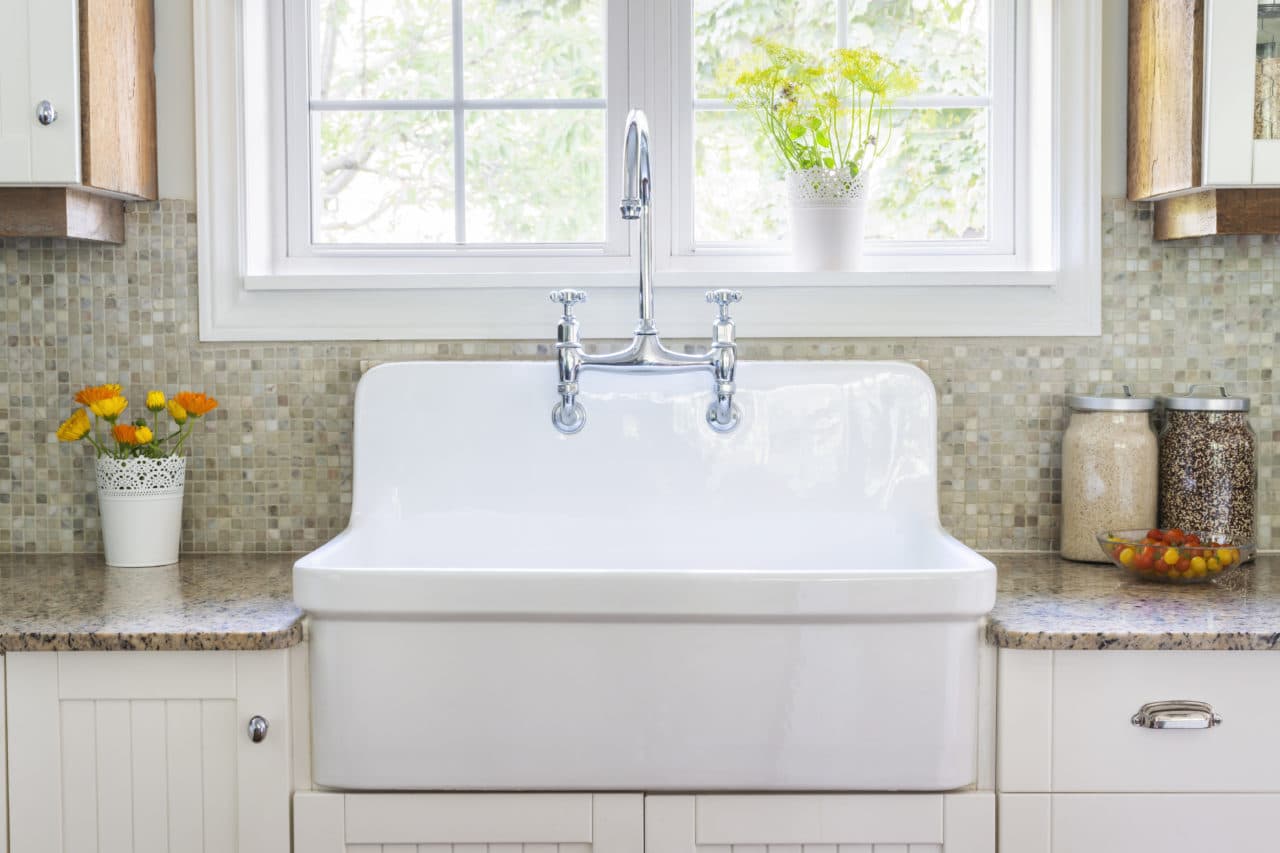One of the most common plumbing issues in bathrooms is a clogged sink. Whether something washed down the drain and is obstructing water flow or there’s an excess of grime and hair that needs to be removed, every sink will clog eventually. Some plumbing issues require professional help. Others don’t. Before you call a plumber to fix a clogged bathroom sink or clogged drain, try these simple DIY fixes!
DIY: Plumbing Problems You Can Fix
When your bathroom sink gets clogged up, your first impulse could be to call a plumber. Sometimes you just need a professional plumber. But really tough clogs require the right expertise and equipment to fix. Before you make that call, try these simple DIY steps. You might be able to get that excess grime and hair out of the pipes yourself!
Pour the Right Stuff Down the Drain
Rather than using caustic, potentially hazardous commercial drain cleaners, try a natural approach that’s environmentally friendly and less likely to damage plumbing or septic tanks. Some options include:
Boiling Water
Most clogs consist of soap scum, mold, and other grime that can be melted away at high temperatures. Boiling water offers an effective and damage-free removal method. Fill a big pot with water, bring it to boil, and pour it into the drain slowly, a third at a time. Take short breaks of five minutes between each third of water to allow the heat to seep into the grime and heat up the pipes. It may take more than one pot of water to fully remove the clog.
Vinegar and Baking Soda
Ever help your kids make a model volcano for science class? Then you know what to do. Simply mix equal parts baking soda and vinegar in a measuring cup. The mixture will quickly cause a fizzing reaction. As soon as the fizzing starts, slowly pour the liquid into the drain. The fizzing helps remove the grime from the plumbing. It may take several applications to completely clear the clog. Once you’re done, run hot water for a minute to rinse the excess out of the pipe.
Keep a Plunger Just for Drains
Plungers, typically used to clear clogs in toilets, are just as effective on sinks. Simply remove the stopper, fill the sink with water, and use the plunger on the drain just as you would on a toilet. For sanitary purposes, don’t use your toilet plunger; keep another one on hand for sinks.
Use a Wet/Dry Vacuum on the Bathroom Sink
Get creative! Use the tools you have on hand to fix a clogged sink or drain. For example, put your wet/dry vacuum to work. Select the vacuum’s wet setting and create a strong seal between the hose and the drain opening. Set the suction power to the highest setting and turn it on. The clog should dislodge very quickly. If not, try reinforcing the seal to get better suction.
Snake the Clogged Sink
As a final DIY step, consider using a drain snake, available at local hardware stores. Take the stopper out of the drain and place the end of the snake in the opening. Work the wire down firmly and push through any resistance. Once you get the snake around the bend in the pipe, it should be easy to get the rest of the wire down the drain. Then, pull the snake out of the pipe. You may need to snake the pipes a few times to fully clear the clog.
Professional Plumbing Services
If the DIY approach doesn’t work – or you’d rather spend your time on something more pleasant than plumbing – call Lee Company. Our experienced, well-trained plumbers clear all kinds of clogs safely, quickly, and professionally.


